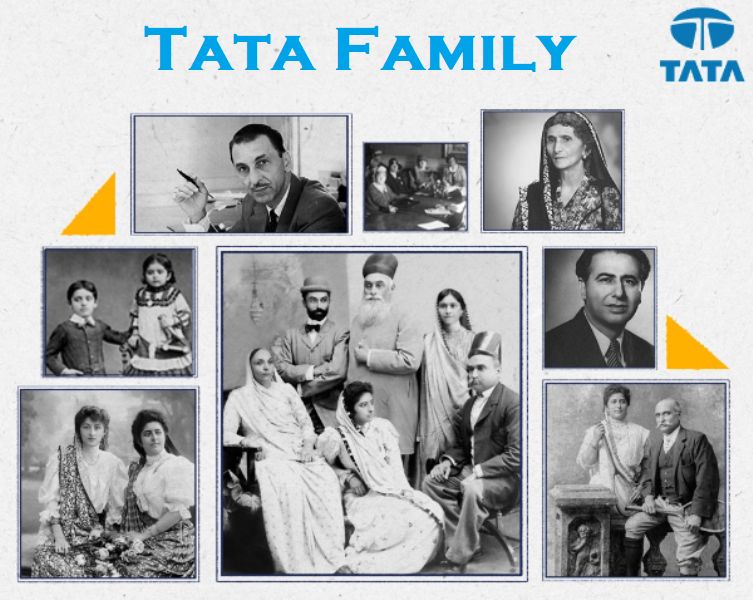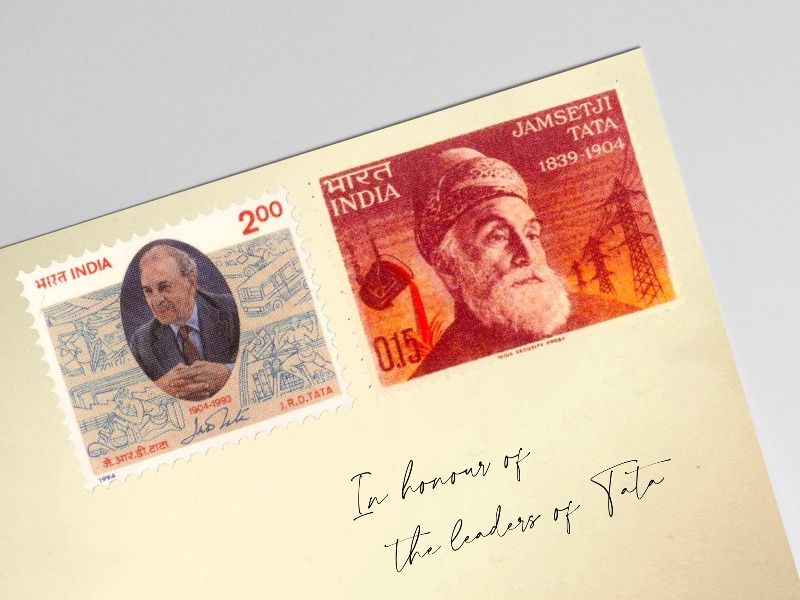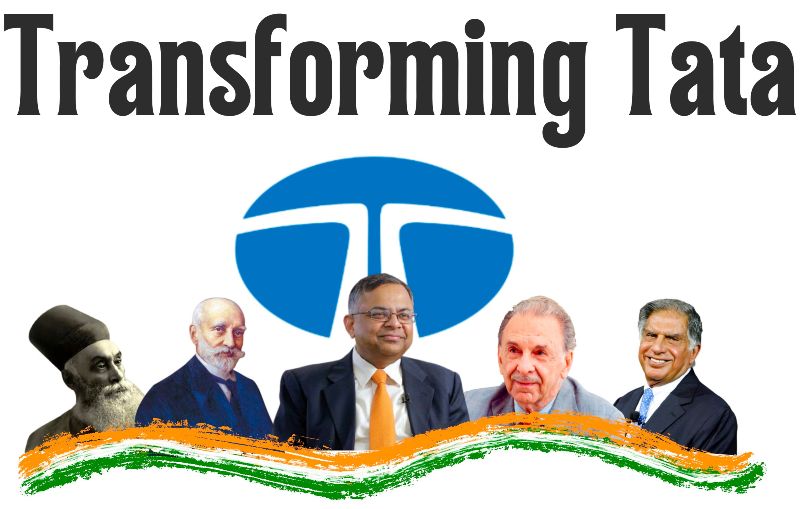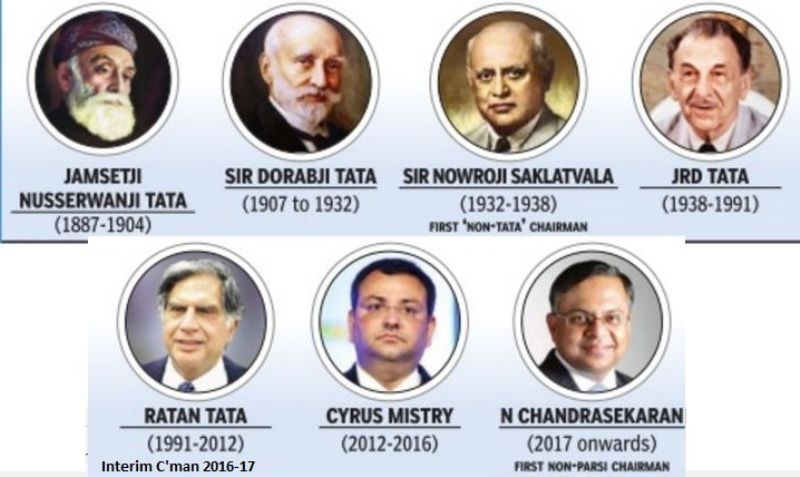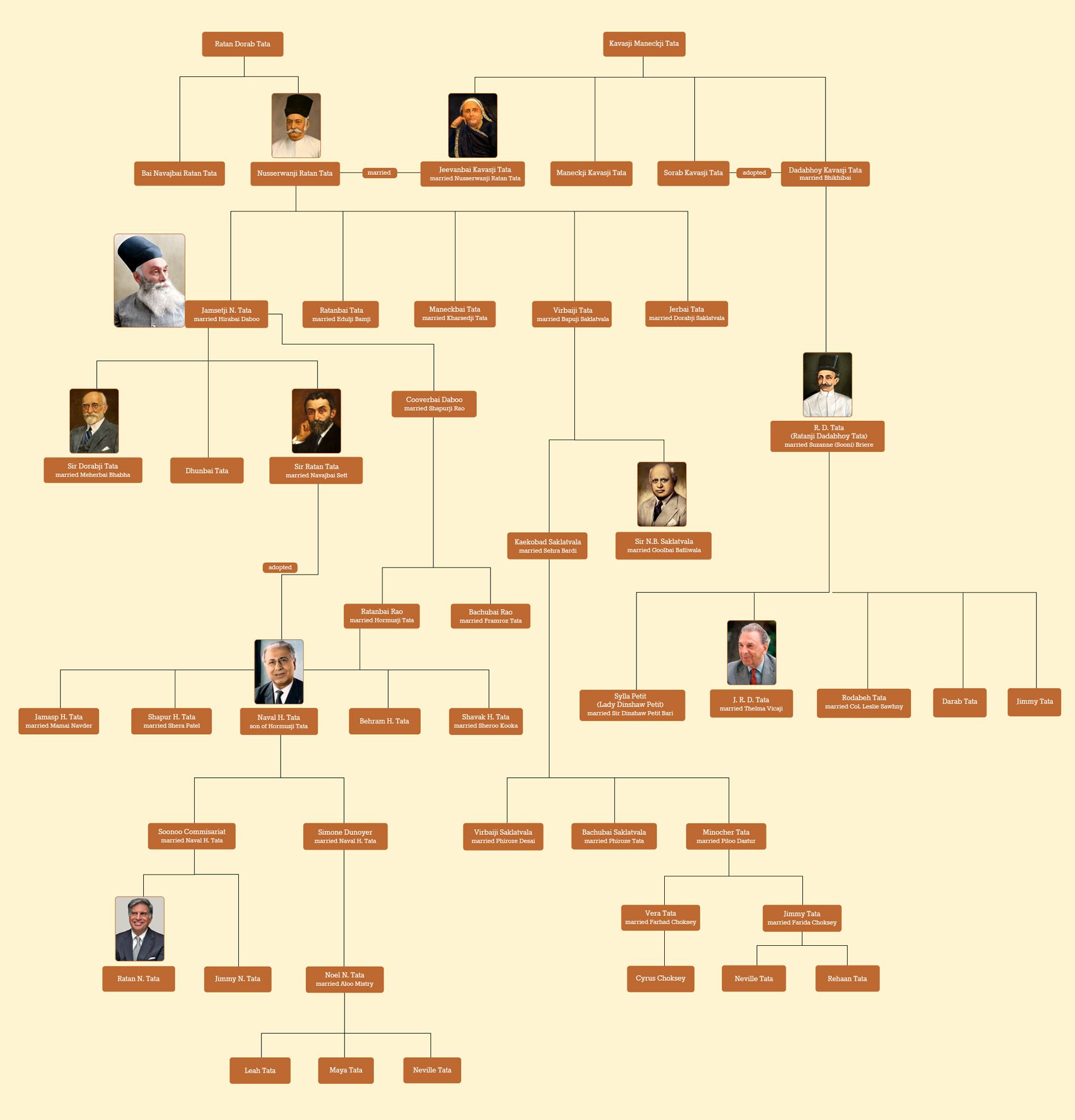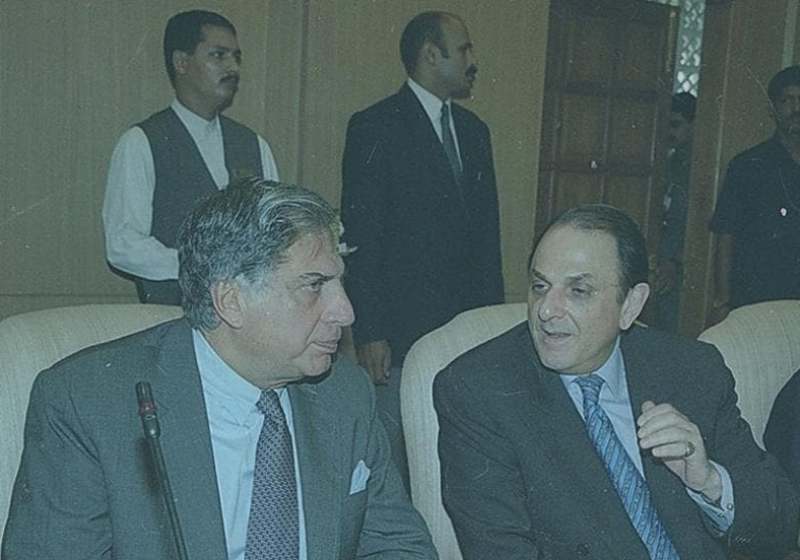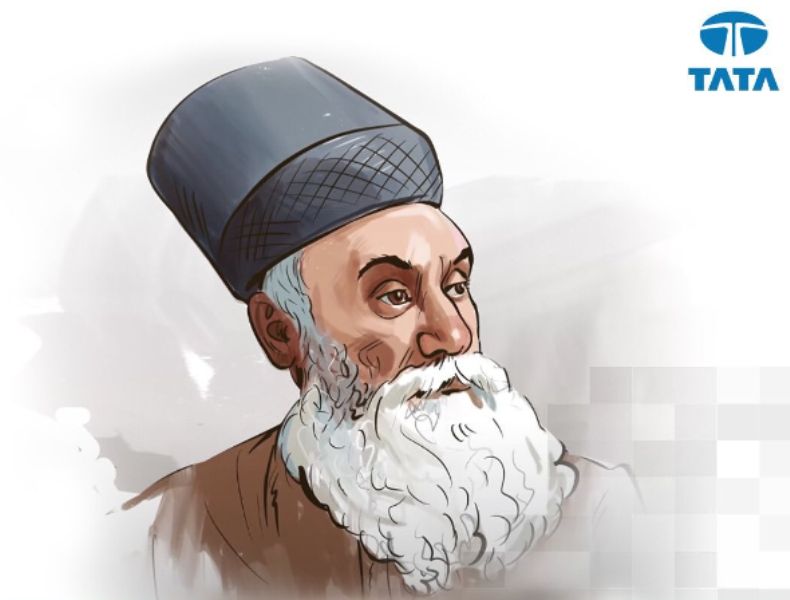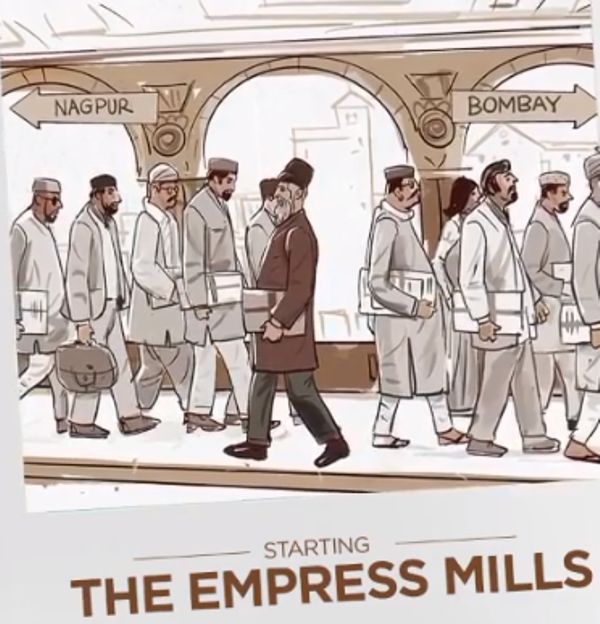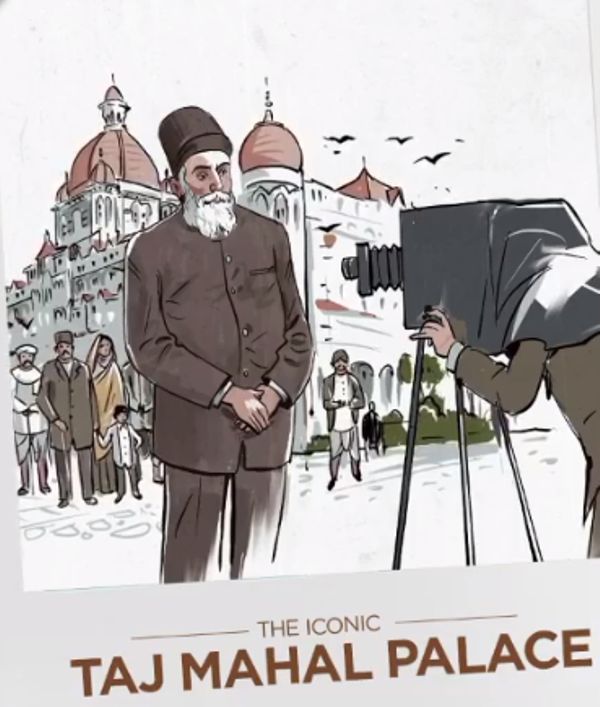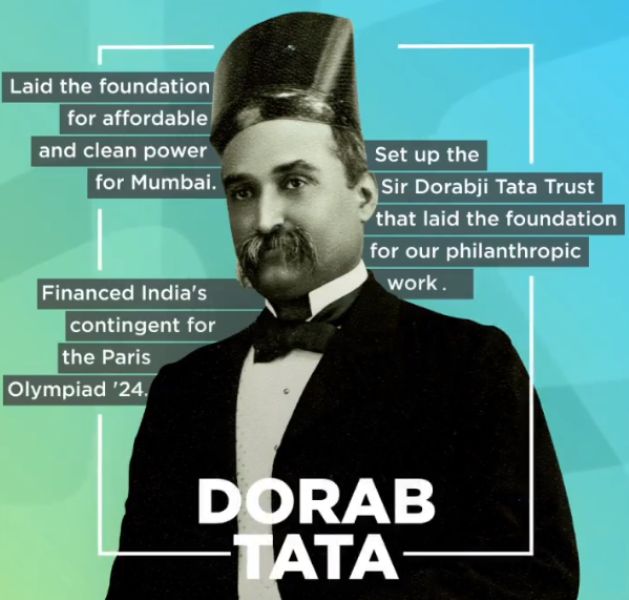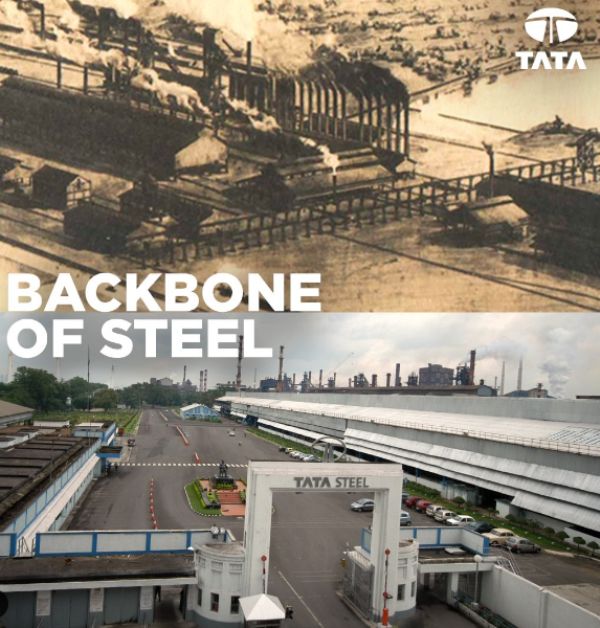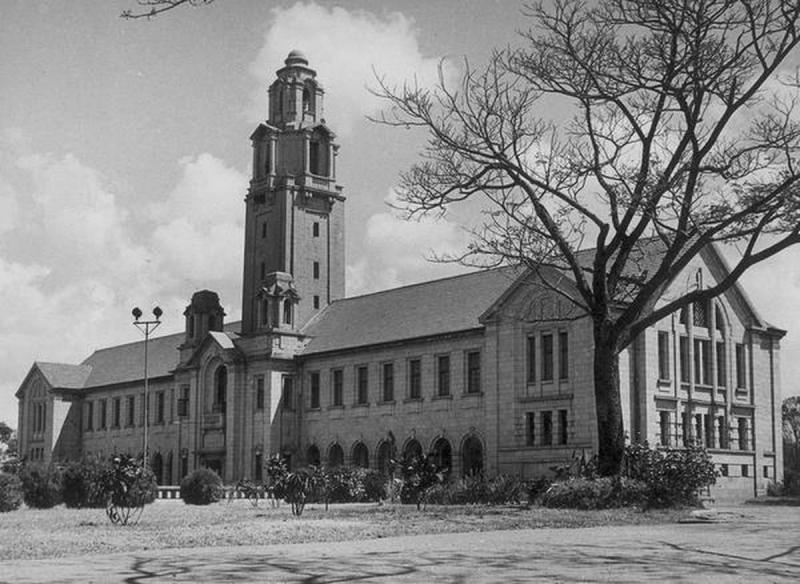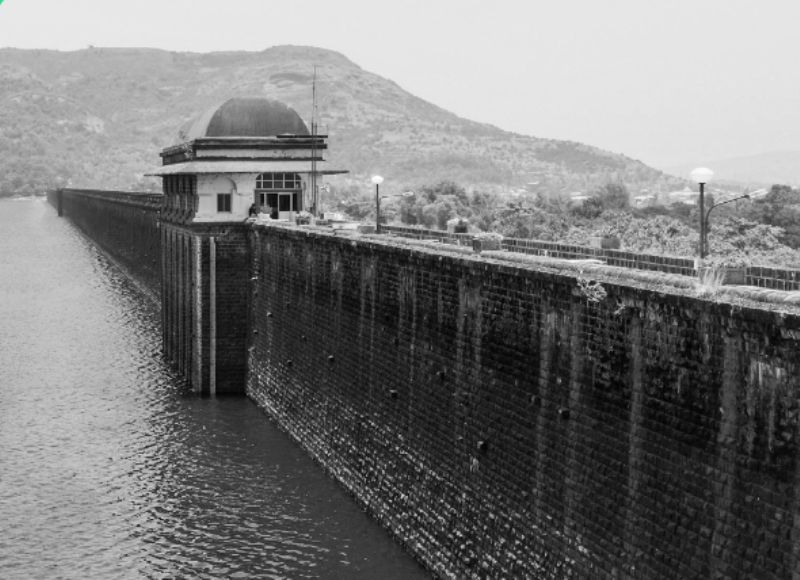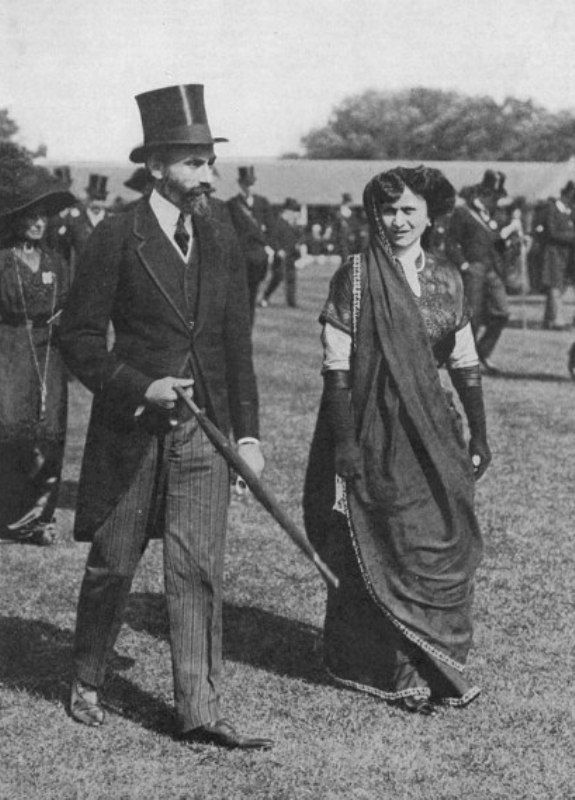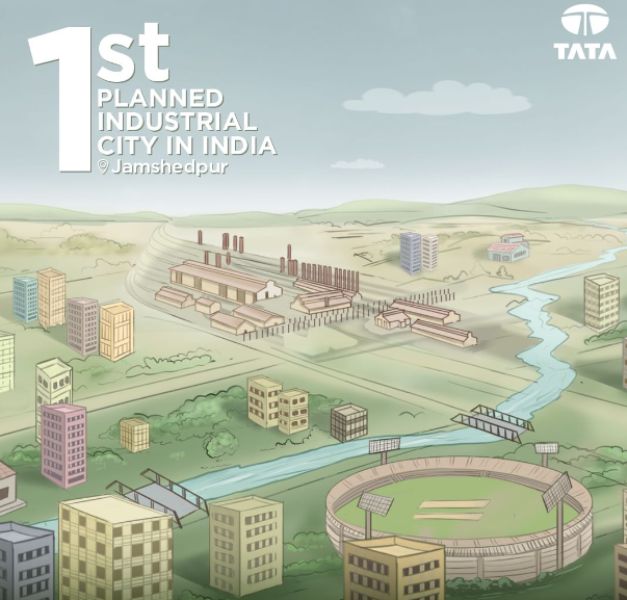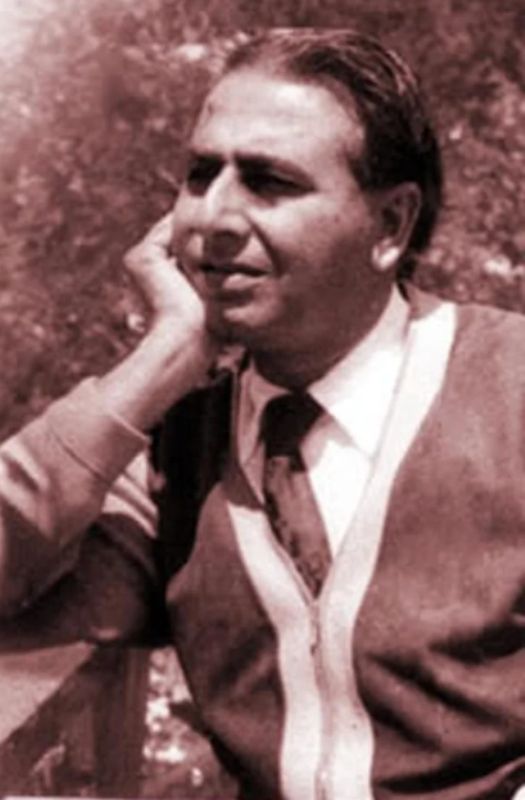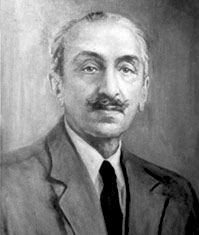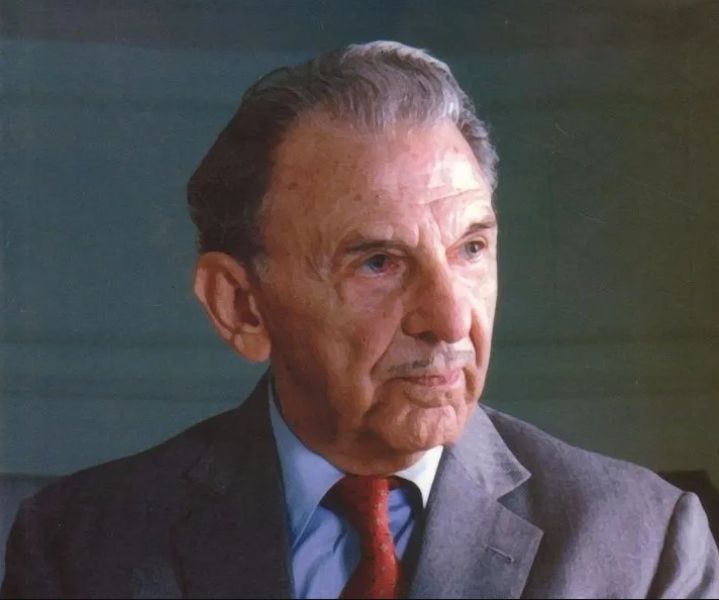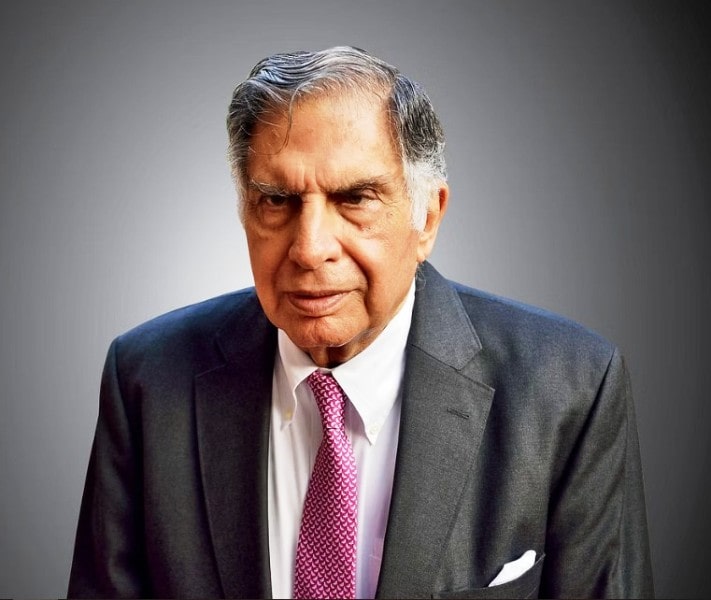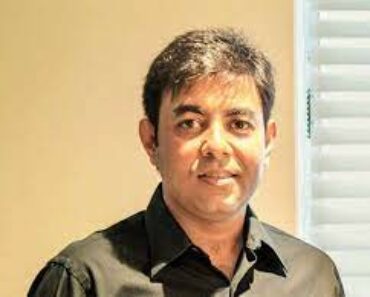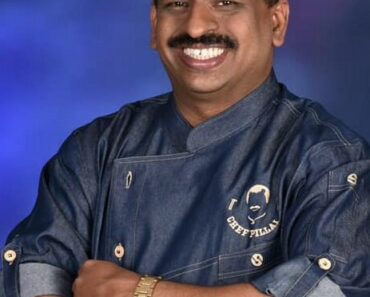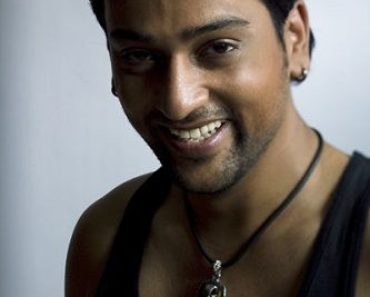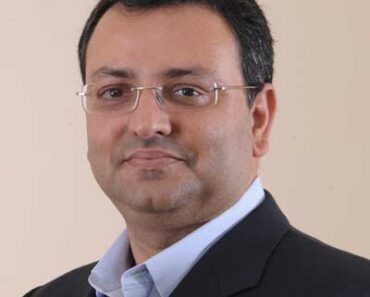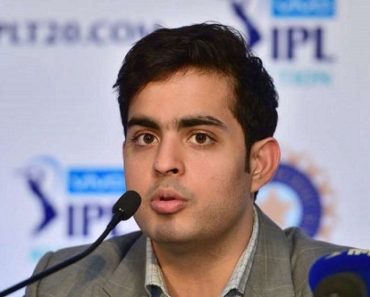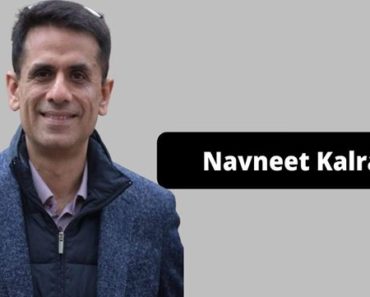The Tatas, a Parsi family, relocated from Surat in Gujarat to Mumbai, where Jamshetji Tata, the founder of the Tata family’s wealth, initiated their prosperity. Through the marriage of Sylla Tata to Sir Dinshaw Maneckji Petit, 3rd Baronet, the Tata family became connected to the Petit baronets. Ratan Tata, the esteemed figure and patriarch of the Tata Group in India, often draws comparisons to Warren E. Buffett and Bill Gates. He is renowned as “Mr. Clean” due to the Tata family’s strong stance against corruption, a value that has contributed to their esteemed reputation, even inspiring admiration from schoolchildren.
Contents
Tata Group: An Overview
The Tata Group, a conglomerate renowned for its production of Land Rovers, management of the iconic Pierre Hotel in New York, and global sale of Tetley tea, stands out as an exceptional entity in India. In a country where corruption is widespread and often accepted as a norm, the Tata Group’s existence is seen as an anomaly. Founded in 1868 by Jamsetji Tata, a descendant of Parsi immigrants, a dynamic community in Mumbai, the Tata Group boasts a remarkable history in India. Initially starting as a trading enterprise, the company steadily expanded its operations, pioneering various groundbreaking initiatives such as India’s first steel mill, hydroelectric power station, locally manufactured trains, and even the country’s first airline. A notable achievement by Mr. Tata was the establishment of the Taj Mahal Palace Hotel in Mumbai in 1903, which became India’s first luxury hotel, catering to the needs of Indian citizens. Today, this esteemed hotel is considered a national landmark, representing a remarkable milestone in the Tata Group’s rich journey.
Tata Group: Fabric of Ownership
The complex ownership structure of Tata Sons reflects the strategic approach of a diversified corporation, where the various components of the company serve not only as profit-making entities but also as a source of security in an unpredictable world. In contrast to both other family-run businesses in India and global corporations, the ownership structure of the Tata Group is distinct. While the Parsi community has always been considered the broader “family” of the Tatas, the control of the company has never been entrusted to an outsider. This tight control has resulted in remarkable stability, with only six chairpersons leading the company throughout its 150-year-long history, each averaging a tenure of 25 years. The ownership structure, which grants control to a range of trusts rather than individual family members, is the crucial factor contributing to this stability. By avoiding the risks associated with family members in control who may act irresponsibly or disruptively, the Tata Group has been able to maintain its enduring success.
Chairman: Mostly a Family Business
While the Tata Group encompasses over 30 publicly traded entities, Tata Sons, the holding company for the group, remains unlisted. This deliberate choice provides a shield from volatile market fluctuations and the associated pressure from shareholders to prioritize short-term profits. However, the listed companies within the group do not escape the ongoing scrutiny and shareholder demands for profitability. The intricate ownership structure enables the parent company to maintain control over its extensive empire without necessarily possessing a majority of shares in individual entities. For the majority of its history, there was a customary practice in the Tata family where “the chairman of the trusts was also the chairman of Tata Sons,” with an exception during Nowroji Saklatwala’s tenure as chairman of Tata Sons from 1932 to 1938. However, this tradition was broken in 2012 when Ratan Tata stepped down as chairman of Tata Sons while retaining his position as chairman of the trusts. Cyrus Mistry assumed the role of the sixth Chairman of Tata Sons. This arrangement resulted in a dual leadership structure, with Ratan Tata effectively retaining control while Mistry served as a symbolic figurehead.
Tata Family & its Branches
Jamshedji Tata, the founder of the Tata Group, had an uncle named Dadabhoy Tata who was his mother’s brother. Dadabhoy Tata had a son named Ratanji Dadabhoy Tata, who later became a partner in Tata Sons. JRD Tata, whose full name was Jehangir Ratanji Dadabhoy Tata, was one of the five children of Ratanji Tata and his second wife, Suzanne Briare, who was of French descent. Despite belonging to different branches of the Tata family, JRD Tata served as a mentor to Ratan Tata and passed on the leadership to him in 1991. Ratan Naval Tata was born to Naval Hormusji Tata and his first wife, Sooni Commissariat. Ratan had a brother named Jimmy, who held senior positions within the Tata group. After their parents’ separation in the 1940s, Ratan and Jimmy were raised by their grandmother, Navajbai. Naval later remarried, and Ratan gained a stepmother named Simone Tata. Simone Tata gave birth to Ratan’s half-brother, Noel Tata, who is married to Aloo Mistry, the sister of Cyrus Mistry.
Connection with Wadia Family
Ratanji Dadabhoy Tata had a granddaughter named Rattanbai Petit from his daughter’s lineage. Rattanbai became the second wife of Mohammad Ali Jinnah, the founder of Pakistan. Unfortunately, Rattanbai passed away at a young age. However, her daughter Dina made the decision to stay in India during the partition of the country in 1947. Dina Jinnah eventually married Neville Wadia, and their son, Nusli, assumed leadership of the Wadia group after his father.
Tata Family: Notable Members
Jamsetji Nusserwanji Tata (3 March 1839 – 19 May 1904)
In 1868, at the age of 29, Jamsetji Nusserwanji Tata embarked on his entrepreneurial journey by establishing a trading firm with an initial capital of Rs 21,000. This marked the beginning of what would eventually become the Tata Group. Jamsetji Tata married Hirabai Daboo, and their two sons, Dorabji Tata, and Ratanji Tata, followed in their father’s footsteps, succeeding him as leaders and chairmen of the Tata Group. Ratanji Dadabhoy Tata, who was Jamsetji Tata’s first cousin, played a significant role in the establishment of the Tata Group. His sister, Jerbai, married a merchant from Mumbai and became the mother of Shapurji Saklatvala. Jamsetji Tata employed Saklatvala to search for coal and iron ore in Odisha and Bihar, which proved to be successful. Saklatvala later relocated to England and became the manager of Tata’s Manchester office. He eventually became a Member of the British Parliament and was associated with the Communist Party. Jamsetji Tata was the uncle of J.R.D. Tata and Sylla Tata, who were both entrepreneurs, through his cousin Ratanji Dadabhoy. Sylla Tata was married to Dinshaw Maneckji Petit, the third baronet of the Petit family. Rattanbai Petit, the sister of the baronet, was married to Muhammad Ali Jinnah, renowned as the founder of Pakistan. During a business visit to Germany in 1900, Jamsetji Tata fell seriously ill. He passed away on 19 May 1904, in Bad Nauheim, Germany, and was laid to rest at the Parsi burial ground located in Brookwood Cemetery in Woking, England.
Empress Mills
In 1874, Jamsetji Nusserwanji Tata took a bold step by founding Empress Mills, a textile mill, in Nagpur instead of Bombay, which served as the central hub for India’s textile industry during that period. Despite going against the conventional choice, this decision ultimately proved to be a remarkable and profitable move.
JN Tata Endowment Fund
In 1892, Jamsetji Tata founded the JN Tata Endowment Fund with the aim of providing assistance to Indian students aspiring to pursue higher education abroad. The first beneficiary of the JN Tata Endowment was a doctor named Freany Cama.
Taj Mahal Palace: A Landmark
The Taj Mahal Hotel commenced its operations on 16 December 1903, marking its official inauguration. Among the various aspirations Jamsetji Tata held for India, the hotel was the sole accomplishment realized within his lifetime.
Sir Dorabji Tata (27 August 1859 – 3 June 1932)
After Jamsetji’s demise in Germany in 1904, his eldest son, Sir Dorabji Tata, took up the mantle of fulfilling his father’s ambitious endeavors for India and became the second Chairman of the Tata Group. Dorabji’s spouse, Meherbai Tata, was the paternal aunt of nuclear scientist Homi J. Bhabha. Dorabji passed away at the age of 73 in Bad Kissingen, Germany, on 3 June 1932. Without any children, Dorabji and Meherbai were laid to rest beside each other at Brookwood Cemetery in Woking, England. Following Dorabji’s death, his trusted aide and fervent advocate for labor rights, Nowroji Saklatvala, assumed the role of Chairman of the Tata Group, becoming the third Chairman of the organization.
Tata Iron and Steel Company
In 1907, Sir Dorabji Tata founded the Tata Iron and Steel Company, presently recognized as Tata Steel, in the secluded town of Sakchi. Notably, even before the steel production commenced, he also constructed a hospital to cater to the needs of the nearby community.
First International Office
In 1907, the Tata Group took its first step towards global expansion with the establishment of Tata Limited, their first international office situated in London. This milestone marked the beginning of the company’s aspirations to expand its presence on a global scale.
Indian Institute of Science
Founded in 1909, the Indian Institute of Science came into existence through the visionary ideals of JN Tata, despite his passing away five years earlier to the inauguration of the institute. The institute welcomed its pilot batch of students in 1911.
First Hydroelectric Power
In 1910, Sir Dorab successfully brought to fruition Jamsetji’s vision of introducing clean energy to Mumbai by establishing the first hydroelectric power station in Western India. This significant achievement gave birth to Tata Power.
Ratanji Tata (20 January 1871 – 5 September 1918)
In 1912, Sir Ratan Tata, a philanthropist and the younger son of Jamsetji, was deeply moved by the widespread poverty prevalent in India. As a result, he funded a study at the University of London to investigate the root causes of this poverty. In 1893, Tata got married to Navajbai Sett, and in 1915, he made his final journey to England. On 6 September 1918, he passed away in St. Ives, Cornwall, England, and was laid to rest at Brookwood Cemetery in Woking, near London, alongside his father, Jamsetji Tata. After Ratanji Tata’s demise, his wife, Navajbai Tata, adopted an orphan named Naval, who happened to be the grand-nephew of her mother-in-law, and raised him as her own child.
Steel City
In 1912, the first planned industrial city in India was founded in Sakchi. Later, in 1919, the city was renamed Jamshedpur in honor of its visionary creator, Jamsetji, who had conceptualized the town.
TOMCO: Entry into Consumer Market
In 1917, the Tata Group made its foray into the consumer market with the formation of Tata Oil Mills Co (TOMCO). TOMCO gained acclaim for its popular soap brands, Hamam and Moti. However, in 1984, the company was sold to Hindustan Lever.
Tata Trusts
After the demise of Sir Ratan Tata in 1919, the Sir Ratanji Tata Trust & Allied Trusts came into existence as per his will, marking it as the first among the Tata Trusts.
Naval Tata (30 August 1904 – 5 May 1989)
Naval Tata, born in 1904 in a middle-class Parsi family in Bombay, does not belong to the main Tata family. His father, Hormusji Tata, was a spinning mill master who passed away when Naval was only four years old. It remains uncertain whether Hormusji had direct ties to the affluent Tata family who later adopted his son, despite sharing the same surname. However, it is confirmed that Hormusji was not as affluent as the Tatas. Ratanbai Rao, daughter of Cooverbai Daboo and Shapoorji Rao, married Hormusji Tata, and they gave birth to Naval in 1904. Although Naval was adopted by the Tata family, he was not considered an outsider since he was the nephew of the founder’s wife. After Hormusji’s demise, Ratanbai faced challenges in raising her children in Mumbai and eventually relocated to Navsari in Gujarat. It is reported that Ratanbai supported herself by practicing Zardosi embroidery. Subsequently, Naval and his siblings were sent to the JN Petit Parsi orphanage in Surat. During this time, Jamshedji Tata had two sons, Dorabji, and Ratanji, but neither of them had successors. In 1918, Sir Ratan Tata passed away at the age of 47, prompting the Tata family to seek the adoption of a son to continue the family’s legacy. Lady Navajbai, also known as Lady Tata and Sir Ratan Tata’s wife, made the decision to adopt a young Naval at the age of 13. Naval completed his formal education at the University of Mumbai and later in England before joining the Tata business in 1930. He entered into two marriages and had three sons. Ratan Tata, the fifth Chairman of the Tata Group, and Jimmy Tata were born from his first wife, Sooni Commissariat. His son Noel Tata was born from his second wife, Simone Naval Tata, a Swiss woman of the Catholic faith who conceptualized Lakme and served as the chairperson of Trent. Naval Tata never forgot his past, and he once said,
I am grateful to God for giving me an opportunity to experience the pangs of poverty, which more than anything (else) moulded my character in later years of my life.”
He passed away in Bombay (now Mumbai) on 5 May 1989 following a long battle against cancer.
Ratanji Dadabhoy Tata (1856–1926)
Ratanji Dadabhoy Tata‘s father, Dadabhoy Tata, and Jamshedji Tata’s mother, Jeevanbai, were siblings, making Ratanji a cousin of Jamshedji Tata and a member of the broader Tata family. At a young age, Ratanji married a Parsi girl, but unfortunately, she passed away without bearing children shortly after their marriage. In his forties, he defied conventions by marrying Suzanne Brière, a French woman, in 1902. This union faced disapproval from certain members of the Parsi community. Ratanji and Suzanne had five children together: Rodabeh, Jehangir (J.R.D. Tata), Jimmy, Sylla, and Dorab. In 1926, he passed away in Paris, France.
Opium trading activities
Ratanji established a business called Tata & Co. in China, specializing in importing opium. During that period, the opium trade was considered lawful. Together with fellow merchants like David Solomon Sassoon, he submitted a petition to the Hong Kong Legislative Council in 1887. The purpose of the petition was to express their apprehensions regarding a bill that had the potential to affect their opium trading operations.
J. R. D. Tata (29 July 1904 – 29 November 1993)
Following the passing of Sir Nowroji in 1938, J.R.D. Tata, at the age of 34, assumed the role of the 4th Chairman of the Tata Group. This appointment made him the youngest Chairman in the history of the group. He held the position until 1991 when he designated Ratan Tata as his successor. J.R.D. Tata is renowned for his groundbreaking contribution to Indian aviation through the establishment of Tata Airlines, later known as Air India. In 1930, he got married to Thelma Vicaji, who happened to be the niece of Jack Vicaji. It was Jack Vicaji whom Tata had hired as his defense attorney in a case where he faced charges for speeding his Bugatti on Bombay’s Marine Drive. Prior to this marriage, Tata was engaged to Dinbai Mehta, who later became the mother of Shapur Kharegat, the editor of The Economist. J.R.D. Tata was born to a Parsi father and a French mother who had embraced Zoroastrianism, although he himself identified as agnostic. On 29 November 1993, at the age of 89, Tata passed away in Geneva, Switzerland, due to a kidney infection.
India’s First Pilot
In 1929, at the age of 24, JRD Tata achieved a significant milestone by becoming the first individual in India to obtain a pilot license. This accomplishment not only fulfilled his childhood dream of flying but also reflected his deep admiration for the celebrated aviator Louis Bleriot.
Air India
In 1932, JRD Tata made a notable contribution to the development of Indian aviation by personally piloting the first flight from Karachi to Mumbai. This historic journey marked the inception of Tata Airlines, which eventually evolved into the renowned Air India. JRD Tata’s involvement in this milestone played a pivotal role in the history of Indian aviation.
Tata Chemicals
In 1939, Tata Chemicals was founded in the secluded coastal region of Mithapur. As the company experienced significant growth and established its dominance in the market, a thriving community emerged around the plant.
Tata Memorial Hospital
In 1939, the Tata Memorial Hospital was established by the Sir Dorabji Tata Trust. This institution emerged as a trailblazer in cancer treatment within India, offering accessible cancer care to all individuals.
Tata Engineering and Locomotive Company
In 1945, the Tata Group maintained its rapid business expansion by establishing Tata Engineering and Locomotive Company, which was subsequently renamed Tata Motors in 2003. This marked another milestone in the growth trajectory of the Tata Group.
Tata Institute of Fundamental Research
In 1945, JRD Tata and Homi Bhabha collaborated to establish the Tata Institute of Fundamental Research. This initiative represented a significant leap forward in bolstering India’s scientific infrastructure and capabilities.
Tata Global Beverages
In 1962, the Tata Group entered the beverages industry by introducing Tata Finlay, which eventually transformed into the renowned Tata Tea brand. Over time, the company evolved and is now recognized as Tata Global Beverages.
Tata Exports
Established in 1962, Tata Exports, now known as Tata International, is actively involved in the trading, distribution, and production of leather goods. The company operates across 39 countries, expanding its global presence in various markets.
India’s first software services company
In 1968, Tata Consultancy Services (TCS) was founded, becoming India’s first software services company and initiating a transformative era. Presently, TCS has established a worldwide presence, operating across 46 countries.
Desh Ka Namak
In 1983, Tata Chemicals brought about a significant change in salt consumption in India by introducing Tata Salt, the country’s first branded iodized salt. This pioneering product, known as “Desh Ka Namak,” aimed to promote a strong and healthy society by emphasizing the importance of iodine in the diet.
Passenger Vehicle Market
Following its triumph in the commercial vehicle sector, TELCO (now known as Tata Motors) ventured into the passenger vehicle market in 1991. The company made its debut with the launch of the Tata Sierra, followed by the introduction of the Tata Estate in 1992. This expansion marked Tata Motors’ foray into the realm of passenger vehicles.
Ratan Tata
In 1991, JRD Tata concluded his 53-year tenure as Chairman and named Ratan N Tata as his successor. Under Ratan Tata’s leadership as the 5th Chairman of the Tata Group, the conglomerate experienced remarkable growth, evolving into a $100 billion enterprise. In 2017, N. Chandrasekaran, who had been serving as the CEO and MD of TCS since 2009, was appointed as the Chairman of Tata Sons by the Board of Directors. Ratan Tata is unmarried and does not have any children. In 2011, he revealed his relationships and said,
I came close to getting married four times and each time I backed off in fear or for one reason or another.”
Watch Market
In response to evolving market trends in 1992, Titan introduced the Raga brand, aiming to cater to the women’s watch market. Simultaneously, the launch of Fastrack in 1998 established it as a highly recognized brand among the youth. Both Raga and Fastrack were strategic moves by Titan to tap into specific consumer segments and meet their unique preferences.
Jewelry Market
In 1994, Tata revolutionized the Indian jewelry sector by launching Tanishq, a retail brand that brought organization, reliability, and transparency to an otherwise disorganized industry.
First Indian Car and SUV
In 1998, TELCO (now known as Tata Motors) introduced the Tata Indica, India’s first domestically designed and manufactured car, along with the Tata Safari, the country’s first sports utility vehicle (SUV).
Tetley
In 2000, Tata Tea (now Tata Global Beverages) acquired Tetley, a prestigious British tea brand with a rich history spanning 160 years. Today, Tetley stands as the second-largest tea brand globally.
Tata Communications
In 2002, the Tata Conglomerate acquired a controlling stake in VSNL, resulting in the creation of Tata Communications. Today, this company has emerged as a global frontrunner in network solutions, mobility, and the Internet of Things (IoT).
Tata Sky
In 2006, the conglomerate responded to the evolving satellite entertainment industry by establishing Tata Sky, a Direct-to-Home (DTH) service provider.
Tata Steel Europe
In 2007, Tata Steel acquired Corus (now Tata Steel Europe), leading to its growth as the second largest steel manufacturer in Europe. With a focus on serving the construction, automotive, packaging, and engineering sectors, Tata Steel Europe has established itself as a prominent player in the industry.
People’s car
In 2008, Tata Motors unveiled the Tata Nano, often referred to as the “people’s car,” with the aim of providing affordable and reliable transportation to millions. Additionally, the company acquired the renowned British automaker Jaguar Land Rover.

